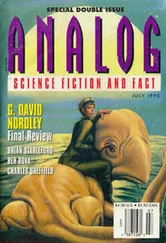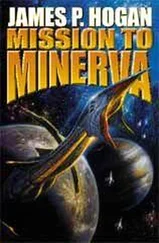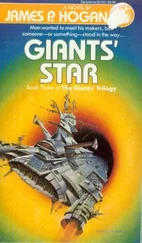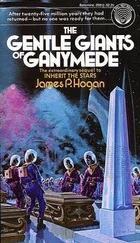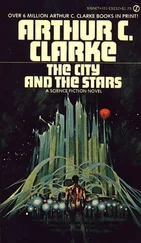James Hogan - Inherit the Stars
Здесь есть возможность читать онлайн «James Hogan - Inherit the Stars» весь текст электронной книги совершенно бесплатно (целиком полную версию без сокращений). В некоторых случаях можно слушать аудио, скачать через торрент в формате fb2 и присутствует краткое содержание. Жанр: Фантастика и фэнтези, на английском языке. Описание произведения, (предисловие) а так же отзывы посетителей доступны на портале библиотеки ЛибКат.
- Название:Inherit the Stars
- Автор:
- Жанр:
- Год:неизвестен
- ISBN:нет данных
- Рейтинг книги:3 / 5. Голосов: 1
-
Избранное:Добавить в избранное
- Отзывы:
-
Ваша оценка:
- 60
- 1
- 2
- 3
- 4
- 5
Inherit the Stars: краткое содержание, описание и аннотация
Предлагаем к чтению аннотацию, описание, краткое содержание или предисловие (зависит от того, что написал сам автор книги «Inherit the Stars»). Если вы не нашли необходимую информацию о книге — напишите в комментариях, мы постараемся отыскать её.
Inherit the Stars — читать онлайн бесплатно полную книгу (весь текст) целиком
Ниже представлен текст книги, разбитый по страницам. Система сохранения места последней прочитанной страницы, позволяет с удобством читать онлайн бесплатно книгу «Inherit the Stars», без необходимости каждый раз заново искать на чём Вы остановились. Поставьте закладку, и сможете в любой момент перейти на страницу, на которой закончили чтение.
Интервал:
Закладка:
When Hunt talked to the mathematicians one afternoon, he was surprised to learn that they were unaware that the chemists and anatomists in other departments had computed estimates of surface gravity. As soon as he mentioned the fact, everybody saw the significance at once. If the Lunarians had adopted the practice that was common on Earth-using the same units to express mass and weight on their own planet-then the numbers in the table gave Lunarian weights. Furthermore, there was available to them at least one object whose weight they could estimate accurately: Charlie himself. Thus, since they already had an estimate of surface gravity, they could easily approximate how much Charlie would have weighed in kilograms back home. Only one piece of information was missing for a solution to the whole problem: a factor to convert kilograms to Lunarian weight units. Then Hunt speculated that there could well be among Charlie’s personal documents an identity card, a medical card-something that recorded his weight in his own units. If so, that one number would tell them all they needed to know. The discussion ended abruptly, with the head of the Mathematics section departing in great haste and a state of considerable excitement to talk to the head of the Linguistics section. Linguistics agreed to make a special note if anything like that turned up. So far nothing had.
Another small group, tucked away in offices in the top of the Navcomms HQ building, was working on what was perhaps the most exciting discovery to come out of the books so far. Twenty pages, right at the end of the second book, showed a series of maps. They were all drawn to an apparently small scale, each one depicting extensive areas of the world’s surface-but the world so depicted bore no resemblance to Earth. Oceans, continents, rivers, lakes, islands, and most other geographical features were easily distinguishable, but in no way could they be reconciled with Earth’s surface, even allowing for the passage of fifty thousand years-which would have made little difference anyway, aside from the size of the polar ice caps.
Each map carried a rectangular grid of reference lines, similar to those of terrestrial latitude and longitude, with the lines spaced forty-eight units (decimal) apart. These numbers were presumed to denote units of Lunarian circular measure, since nobody could think of any other sensible way to dimension coordinates on the surface of a sphere. The fourth and seventh maps provided the key: the zero line of longitude to which all the other lines were referenced. The line to the east was tagged "528" and that to the west "48," showing that the full Lunarian circle was divided into 576 Lunarian degrees. The system was consistent with their duo-decimal counting method and their convention of reading from right to left. The next step was to calculate the percentage of the planet’s surface that each map represented and to fit them together to form the complete globe.
Already, however, the general scheme was clear. The ice caps were far larger than those believed to have existed on Earth during the Pleistocene Ice Age, stretching in some places to within twenty (Earth) degrees of the equator. Most of the seas around the equatorial belt were completely locked in by coastlines and ice. An assortment of dots and symbols scattered across the land masses in the ice-free belt and, more thinly, over the ice sheets themselves, seemed to indicate towns and cities.
When Hunt received an invitation to come up and have a look at the maps, the scientists working on them showed him the scales of distance that were printed at the edges. If they could only find some way of converting those numbers into miles, they would have the diameter of the planet. But nobody had told them about the tables the Mathematics section thought might be mass-unit conversion factors. Maybe one of the other tables did the same thing for units of length and distance? If so, and if they could find a reference to Charlie’s height among his papers, the simple process of measuring him would allow them to work out how many Earth meters there were in a Lunarian mile. Since they already had a figure for the planet’s surface gravity, its mass and mean density should follow immediately.
This was all very exciting, but all it proved was that a world had existed. It did not prove that Charlie and the Lunarians originated there. After all, the fact that a man carries a London street map in his pocket doesn’t prove him to be a Londoner. So the work of relating numbers derived from physical measurements of Charlie’s body to the numbers on the maps and in the tables could turn out to be based on a huge fallacy. If the diary came from the world shown on the maps but Charlie came from somewhere else, then the system of measurement deduced from the maps and tables in the diary might be a totally different system from the one used to record his personal characteristics in his papers, since the latter system would be the system used in the somewhere else, not in the world depicted on the maps. It all got very confusing.
Finally, nobody claimed to have proved conclusively that the world on the maps wasn’t Earth. Admittedly it didn’t look like Earth, and attempts to derive the modern distribution of terrestrial continents from the land areas on the maps had met with no success at all. But the planet’s gravity hadn’t been all that much different. Maybe the surface of Earth had undergone far greater changes over the last fifty thousand years than had been previously thought? Furthermore, Danchekker’s arguments still carried a lot of weight, and any theory that discounted them would have an awful lot of explaining to do. But by that time, most of the scientists working on the project had reached a stage where nothing would have surprised them any more, anyway.
"Got your message. Came straight over," Hunt announced as Lyn Garland ushered him into Caldwell’s office. Caldwell nodded toward one of the chairs opposite his desk, and Hunt sat down. Caldwell glanced at Lyn, who was still standing by the door.
"It’s okay," he said. She left, closing the door behind her.
Caldwell fixed Hunt with an expressionless stare for a few seconds, at the same time drumming his fingers on the desk. "You’ve seen a lot of the setup here during the past few months. What do you think of it?"
Hunt shrugged. The answer was obvious.
"I like it. Exciting things happen around here."
"You like exciting things happening, huh?" The executive director nodded, half to himself. He remained thoughtful for what seemed a long time. "Well, you’ve only seen part of what goes on. Most people have no idea how big UNSA is these days. All the things you see around here-the labs, the installations, the launch areas-that’s just the backup. Our main business is up front." He gestured toward the photographs adorning one of the walls. "We have people right now exploring the Martian deserts, flying probes down through the clouds of Venus, and walking on the moons of Jupiter. In the deep-space units in California, they’re designing ships that will make Vegas and even the Jupiter Mission ships look like paddleboats. Photon-drive robot probes that will make the first jump to the stars-some seven miles long! Think of it-seven miles long!"
Hunt did his best to react in the appropriate manner. The problem was, he wasn’t sure what manner was appropriate. Caldwell never said or did anything without a reason. The reason for this turn of conversation was far from obvious.
"And that’s only the beginning," Caldwell went on. "After that, men will follow the robots. Then-who knows? This is the biggest thing the human race has ever embarked on: USA, US Europe, Canada, the Soviets, the Australians-they’re all in on it together. Where does a thing like that go once it starts moving, huh? Where does it stop?"
Читать дальшеИнтервал:
Закладка:
Похожие книги на «Inherit the Stars»
Представляем Вашему вниманию похожие книги на «Inherit the Stars» списком для выбора. Мы отобрали схожую по названию и смыслу литературу в надежде предоставить читателям больше вариантов отыскать новые, интересные, ещё непрочитанные произведения.
Обсуждение, отзывы о книге «Inherit the Stars» и просто собственные мнения читателей. Оставьте ваши комментарии, напишите, что Вы думаете о произведении, его смысле или главных героях. Укажите что конкретно понравилось, а что нет, и почему Вы так считаете.


![Лаура Бренз - Потомственная ведьма[Inherit the Witch]](/books/79609/laura-brenz-potomstvennaya-vedma-inherit-the-witch-thumb.webp)
